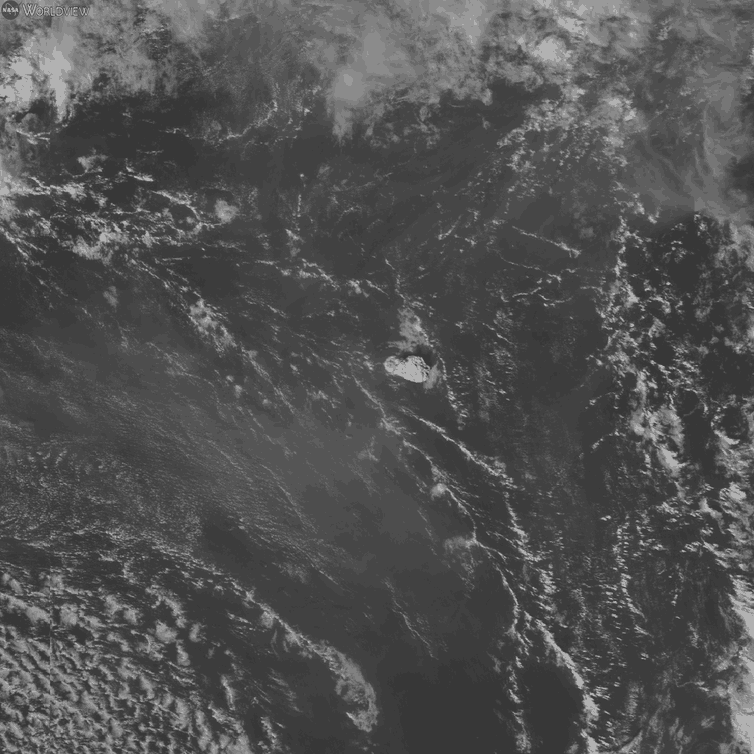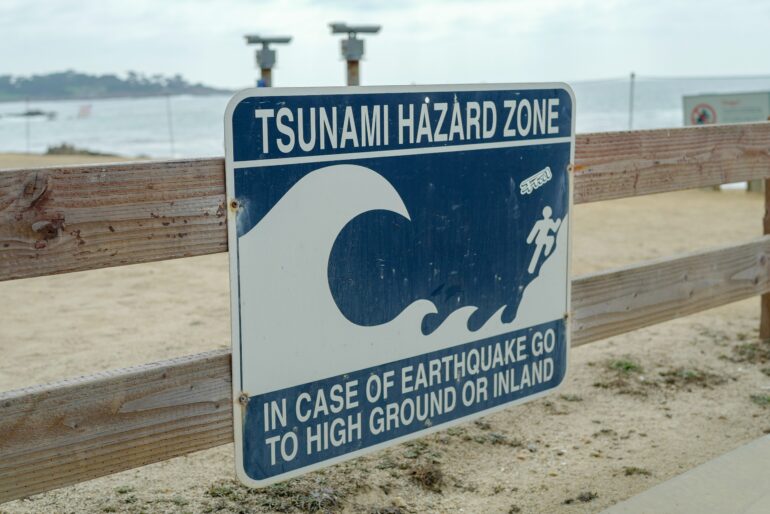On Jan. 15, 2022, the Hunga Tonga-Hunga Ha’apai volcano in Tonga erupted, sending a tsunami racing across the Pacific Ocean in all directions.
As word of the eruption spread, government agencies on surrounding islands and in places as far away as New Zealand, Japan and even the U.S. West Coast issued tsunami warnings. Only about 12 hours after the initial eruption, tsunami waves a few feet tall hit California shorelines – more than 5,000 miles away from the eruption.
I’m a physical oceanographer who studies waves and turbulent mixing in the ocean. Tsunamis are one of my favorite topics to teach my students because the physics of how they move through oceans is so simple and elegant.
Waves that are a few feet tall hitting a beach in California might not sound like the destructive waves the term calls to mind, nor what you see in footage of tragic tsunamis from the past. But tsunamis are not normal waves, no matter the size. So how are tsunamis different from other ocean waves? What generates them? How do they travel so fast? And why are they so destructive?

When the Hunga Tonga-Hunga Ha’apai volcano erupted, it launched ash into the atmosphere, created a powerful shock wave and displaced a huge amount of water, generating a tsunami that raced across the ocean.
Japan Meteorological Agency via WikimediaCommons, CC BY
Deep displacement
Most waves are generated by wind as it blows over the ocean’s surface, transferring energy to and displacing the water. This process creates the waves you see at the beach every day.
Tsunamis are created by an entirely different mechanism. When an underwater earthquake, volcanic eruption or landslide displaces a large amount of water, that energy has to go somewhere – so it generates a series of waves. Unlike wind-driven waves where the energy is confined to the upper layer of the ocean, the energy in a series of tsunami waves extends throughout the entire depth of the ocean. Additionally, a lot more water is displaced than in a wind-driven wave.
Imagine the difference in the waves that are created if you were to blow on the surface of a swimming pool compared to the waves that are created when someone jumps in with a big cannonball dive. The cannonball dive displaces a lot more water than blowing on the surface, so it creates a much bigger set of waves.
Earthquakes can easily move huge amounts of water and cause dangerous tsunamis. Same with large undersea landslides. In the case of the Tonga tsunami, the massive explosion of the volcano displaced the water. Some scientists are speculating that the eruption also caused an undersea landslide that contributed to the large amount of displaced water. Future research will help confirm whether this is true or not.
